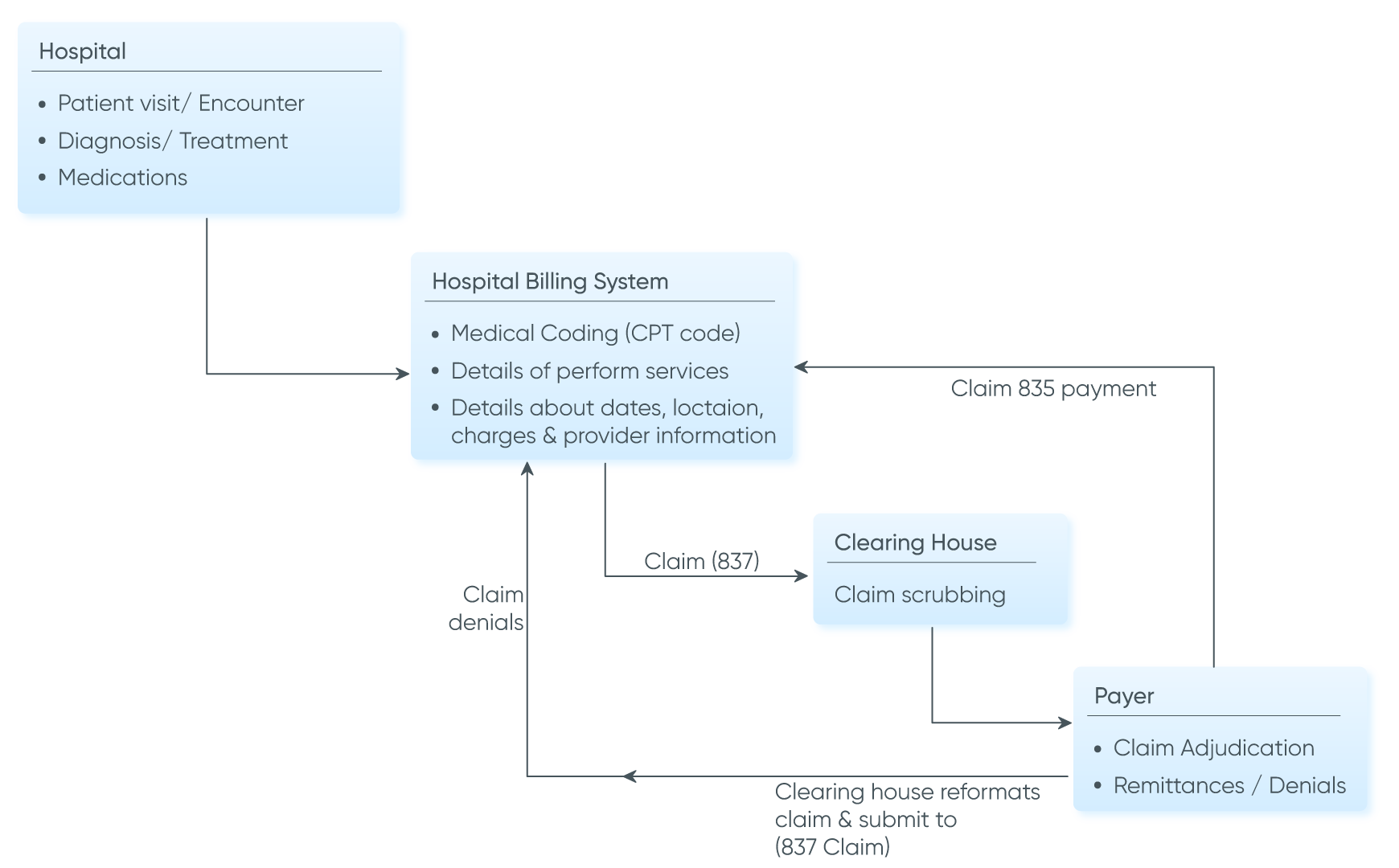Overview
The client is a distinguished US-based orthopedic care specialist organization with an extensive network of clinics spread across multiple locations. With 13 years of experience in the field, the client is committed to providing top-notch orthopedic care through a team of seasoned experts. The orthopedic Clinic has a significant patient intake of 100-200 weekly. The clinic boasts a comprehensive team of 25 physicians, 20 staff members, and 10 administrators.
Business challenges
The primary focus for client is to integrate a robust Electronic Medical Records (EMR) system with a state-of-the-art Clearing House solution. The goal is to streamline and optimize the billing and reimbursement processes across all clinics. The client envisions a seamless integration that enhances efficiency, reduces administrative burdens, and ensures accurate and timely processing of claims. The client also requested orthopedics-specific customizable templates, telehealth, and a patient portal in software. Additionally, the client has requested some features such as e-prescription, telehealth, and image management.
Thinkitive Solution
Thinkitive's team of business analysts and subject matter experts spoke with clients on multiple occasions to better understand their needs. The team has finalized the software's feature list after several discussions.
We integrate with a variety of clearing house vendors, including Change Healthcare, Waystar, Optum 360, Availity, Eligible, Ziramed, OfficeAlly, etc. We developed an EMR software that integrates with the clearinghouse, telehealth, image management, and other features based on the feature list.

Solution Highlights
-
a) Efficient Claims Processing
We provide Integration of a clearing house that enables orthopedists to submit claims electronically to the insurance company. It provides accurate procedural, diagnosis codes and charges as per the orthopedic treatment given.
-
b) Real-time Eligibility Verification
Provides real-time patient insurance eligibility checks, ensuring that patients have active insurance coverage before services are provided. This minimizes claim denials and rejections.
-
c) Claim Status Tracking
The clearinghouse provides real-time updates on the status of claims, including whether the claim has been received, processed, or paid.
-
d) EDI (Electronic Data Interchange)
The clearinghouse uses an electronic data interchange to exchange electronic documents between healthcare providers and insurance payers. It follows data exchange standards such as such as ANSI X12 or HL7 to ensure system compatibility.
-
e) Payment Processing
After the payer receives the claim from the clearinghouse, they process it and send payment to the healthcare provider.
1. Clearinghouse Integration
The Clearinghouse acts as a bridge between the payer and the patient. It offers various features
2. Telehealth Portal
Orthopedic practices require multiple examinations of patients at regular intervals to provide better care. Telehealth features help orthopedists to examine patients virtually/remotely. It increases the count of encounters and reduces the patient’s transportation time and cost.
3. Image Management (PACS)
PACS means Picture Archiving and Communication System. It is a medical imaging technology used to store, manage, and share the medical images of patients. Such as X-rays, CT scans, and MRIs.
We provide this feature as it removes the need for physical film images. The images can be captured with devices such as X-ray machines, CT scanners, and MRI scanners.
4. Customizable Orthopedic Specific Templates
We provide customizable orthopedic specialty templates such as fracture evaluation, joint assessment, operative notes for surgeries, physical therapy referrals, and rehabilitation plans. They help ensure accurate documentation and adherence to clinical guidelines in orthopedic care.
As per the requirement and patient condition, orthopedists can customize these templates which helps in documenting specific details and reduces irrelevant information.
5. E-prescription
For an orthopedic practice, it is important to provide quick treatment to the patient for faster health recovery. The software allows orthopedists to create prescriptions electronically and place orders for tests and medicines to the laboratories and pharmacies in real-time. Orthopedists can use this feature to select accurate medication and quantities. It also has a potential drug check, which improves patient safety.
Value Delivered
-
Lesser Claim Denials
Real-time eligibility verification allows orthopedists to check the medical coverages paid by the insurance company before initializing the treatment. It reduces claim denials.
-
Improved Billing Accuracy
Integration with a clearing house provides accurate diagnostic and procedural codes as per the orthopedic treatment provided. This increases the claim success ratio.
-
Streamline Claim Processing
This integration allows orthopedists to electronically submit claims to insurance companies. It reduces the paperwork and accelerates claim reimbursement.
-
Revenue Maximization
By optimizing the claims process, orthopedic practices can maximize their revenue, ensuring that they receive the appropriate reimbursement for services provided.
